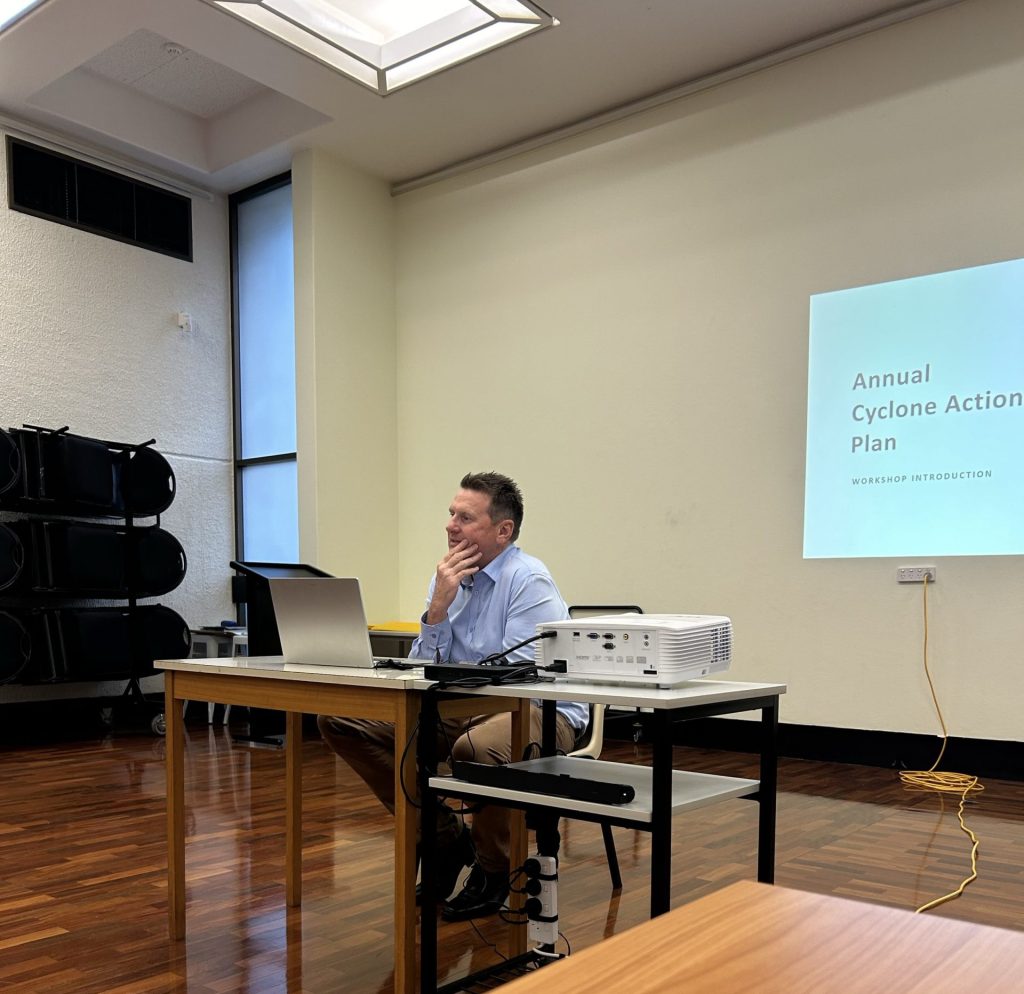Our team is currently immersed in a vital project with a new client in Far North Queensland, focusing on an After-Action Review (AAR) and crafting an annual cyclone action plan. As we delve into this critical work, it’s a timely reminder of the importance of being prepared for cyclones and other natural disasters. Let’s explore the essential steps you can take to ensure your safety and readiness during cyclone season.

Seasonal preparedness: Risks are identified and treatments, ensuring systems, stakeholder lists, processes and training are in place, as well disaster and emergency plans are exercised and fit for purpose.
Early Warning System: Stay ahead of the storm by staying informed. Keep an eye on cyclone forecasts and warnings issued by local authorities. Sign up for emergency alerts via text message or mobile apps to receive timely updates.
Family Communication: Establish a clear communication plan with your family members. Designate a meeting point in case of evacuation and share emergency contacts. Ensure everyone knows how to reach each other and stays connected during the storm.
Emergency Supplies: Stock up on essential supplies well in advance. This includes non-perishable food, water, flashlights, batteries, a first aid kit, and necessary medications. Having emergency cash on hand is also important in case of power outages affecting ATM and card transactions.
Home Preparation: Secure your home by removing outdoor furniture, plants, and other loose items that could become projectiles in strong winds. Reinforce windows and doors with shutters or plywood if necessary. Clear gutters and drains to prevent water buildup.
Evacuation Plan: Know your evacuation routes and shelters designated by local authorities. Prepare a “go bag” with essentials like clothing, important documents, medications, and comfort items. Don’t forget to plan for your pets’ safety and have necessary supplies for them as well.
Backup Power and Communication: Consider investing in a generator or alternative power source to keep essential devices running during power outages. Keep your mobile phones charged and have backup chargers or portable power banks ready.
Stay Informed: Stay tuned to local news and weather updates throughout the cyclone event. Follow instructions from emergency officials and evacuate if advised to do so for your safety.
Post-Cyclone Assessment: After the storm passes, assess your property for damage and prioritise repairs or cleanup tasks. Check on your neighbours, especially those who may need assistance.
Review and Update: Periodically review and update your cyclone action plan based on past experiences or changes in your situation. Learn from each event to improve your preparedness for future cyclones.
By following these steps and customising them to your specific circumstances, you can create a robust cyclone action plan that enhances your safety and resilience during cyclone season. Remember, preparation is key to surviving the storm and emerging stronger on the other side. Stay safe!

